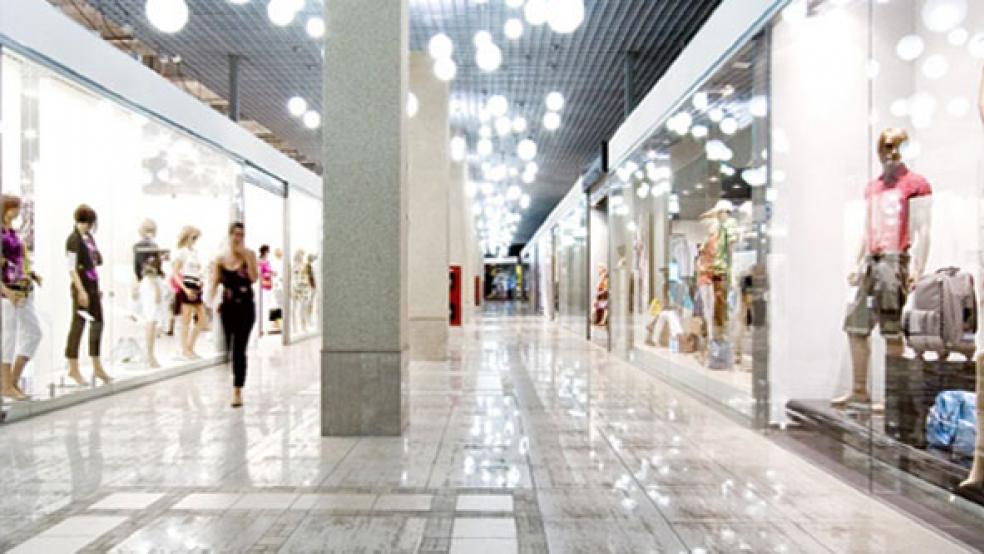Optimism about the economy has been springing up faster than the Easter bunny. Even with a steady stream of positive economic data, though, many economists caution that it’s far too early to herald a strong consumer-driven recovery.
A number of tax changes that took effect this year had analysts worried about whether consumer confidence and spending would take a hit. The payroll tax holiday that expired at the end of last year saw Social Security taxes revert from 4.2 percent to 6.2 percent on the first $113,700 of an individual’s income. As part of the New Year’s Day deal to avert the full impact of the fiscal cliff, marginal tax rates climbed from 35 percent to 39.6 percent for single filers making more than $400,000 and couples making more than $450,000. The top tax rate on capital gains and dividends rose from 15 percent to 20 percent for high-income earners, among other changes that kicked in this year.
A few months of these higher taxes don’t appear to have disrupted consumers, though. A recent survey from Bankrate.com suggests one reason why: about half of American workers didn’t notice the change in their payroll taxes. Consumers have also been helped along by an improving job market that has added 2.2 million jobs since that start of 2012; wage gains of about 2 percent year over year; a continuing rebound in housing prices that lets homeowners feel financially stronger, if still far from flush; tame inflation; gas prices that have been trending lower in recent weeks; and a stock market that closed March in record territory. “That doesn’t mean the expiry of the payroll tax cuts didn’t hurt many consumers,” says Chris G. Christopher, director of consumer economics for IHS Global Insight. “It was definitely a negative, but maybe not as much of a negative as originally thought.”
On top of that, the Commerce Department reported that the economy grew at a slightly faster rate than previously estimated over the final three months of 2012. The 0.4 percent annual rate of growth in the fourth quarter was nothing to get excited about – it was the slowest quarterly growth in nearly two years – and the growth of 2.2 percent for all of 2012 was better than the 1.8 percent rate in 2011 but no reason to break out the bubbly. Still, the slightly stronger momentum suggested by the latest revision and other recent data has led many economists to increase their estimates for growth in the first quarter of this year, which ends Sunday. The government’s initial report on GDP growth for the first quarter of 2013 is due out April 26.
Consumer sentiment had seemed to take a hit in early March as the result of rising gas prices and repeated warnings about the effects of the sequester. The Conference Board’s Consumer Confidence Index, with its survey cutoff date of March 14, plunged sharply. The mid-month reading of the Reuters/University of Michigan Consumer Sentiment index was similarly weak. Optimism surged in the second half of the month, though, with the final reading of the Reuters index improving to 78.6, up sharply from the preliminary reading of 71.8 and slightly higher than February’s reading of 77.6.
“Two factors were responsible for the gains: Consumers discounted the administration’s warning about economic catastrophe following the cuts in federal spending, and consumers have renewed their expectations that job gains will accelerate in the months ahead,” the survey’s chief economist, Richard Curtin, said in a statement Friday. “This is not the first time that optimism increased following the Great Recession, but the recent gains stand a better chance to be sustained and ultimately lead to a lower unemployment rate and support consumer spending increases in the year ahead.”
Consumer sentiment is one thing; actual consumer behavior can be quite different. Yet data released Friday by the Bureau of Economic Analysis showed that both personal income and spending rose in February more strongly than economists had been expecting. Personal income has been volatile in recent months, as dividend and bonus payouts got accelerated into the final months of 2012 in order to avoid higher taxes. Personal income rose 1.1 percent in November and 2.6 percent in December before plunging 3.7 percent in January – the steepest such drop on record, according to economists at The PNC Financial Services Group. Against that backdrop, February’s 1.1 percent gain – better than the 0.8 percent rise economists surveyed by Briefing.com had forecast – was mildly encouraging.
Similarly, personal spending rose 0.7 percent, the most in five months and better than the 0.6 percent increase expected by economists. In inflation-adjusted terms, spending rose 0.3 percent in February, and real spending for December and January was revised higher as well. “Households are still gradually increasing their spending in early 2013, despite higher taxes and the sequester,” PNC’s economists wrote in a note to clients Friday.
Even with all the positive signs, economists note a couple of reasons for caution over the coming months. Per capita spending levels remain below the pre-recession peak, and the increased spending from last month may not be of the sort that can easily continue throughout the rest of the year. “In February, people spent a lot of their money at gasoline stations, grocery stores, on autos – which is a good sign as well, but it’s more like a relieving of pent-up demand,” says Christopher of IHS Global Insight. Much of the spending was not discretionary. “They weren’t going to restaurants and they weren’t buying electronics and they weren’t buying much clothing.”
Bob Johnson, director of economic analysis at Morningstar, noted last week that weekly chain-store sales data from the International Council of Shopping Centers have slumped of late – a trend he calls a yellow flag for consumer spending. “The ICSC report shows a consumer who is considerably weaker than the oft-cited retail sales report for February,” which showed sales growing at 1.1 percent from the prior month, or 13.2 percent annualized, Johnson wrote Saturday. “The sizable increase caused many analysts to claim the payroll tax increase was a non-event, that consumer growth was accelerating and perhaps reaching an ‘escape velocity.’ That in turn caused a considerable rise in both first-quarter and full-year GDP estimates. I think all of these conclusions were premature.”
The five-week average of those chain-store sales has stayed between 2.5 percent and 4 percent for the last three years, but has now dropped to about 2 percent. “The weekly data looked even worse, falling to a measly 1 percent growth rate, which was even lower than the Hurricane Sandy-related growth rate low of 1.4 percent in November,” Johnson notes. February and March may look strong, but it’s too soon to say for certain that the strength will carry through to April and May.
Economists say it’s also too early to see any effects of the automatic spending cuts known as sequestration, but with federal, state and local governments employing some 16 percent of all workers (the vast majority of those at the state and local levels), any reduced headcounts or reduced pay for furloughed workers are likely to create some economic drag and weigh on income levels.
Scott Hoyt, senior director of consumer economics for Moody's Analytics, says we’ll need to see stronger wage growth before consumers can truly be counted on to propel the economic recovery by ramping up spending more quickly. “The near-term sustainability of the growth remains the important question,” Hoyt wrote on Friday. “With sequester-related cuts in employment and pay threatening income growth in coming months, it is unclear whether consumers will have the resources to keep raising their spending at this pace.”





